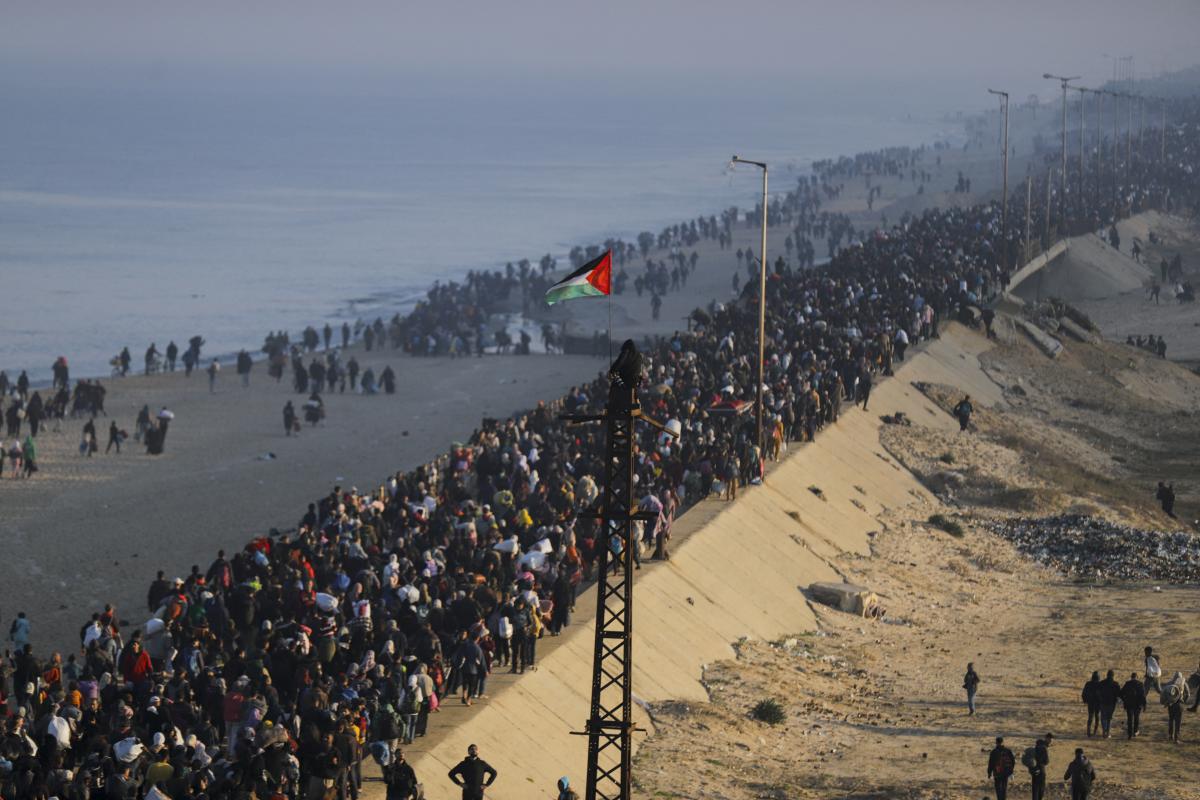When the Gaza ceasefire agreement is fully implemented and the exchange of hostages and prisoners is completed, the region is set to enter the so-called “day after” phase. However, this phase remains undefined, except for a controversial proposal from President Donald Trump: relocating more displaced Gazans to Egypt and Jordan under the pretext that they have “nowhere to stay during the reconstruction period.” A vague proposition with an uncertain endpoint.
Egypt and Jordan swiftly rejected Trump's proposal, as did the broader Arab world and Palestinian leaders, viewing it as nothing more than disguised forced displacement.
War Crime?
The 4th Geneva Convention of 1949 classifies forced displacement as a war crime, strictly prohibiting the forced transfer of populations under any pretext. Any attempt to impose mass expulsion is considered a blatant violation of international law and human rights. Such a move would trigger widespread international condemnation, further escalating the crisis, increasing pressure on Israel, and deepening Palestinian suffering.
Is Forced Displacement a Viable Scenario?
Politically, large-scale displacement appears unlikely due to expected strong opposition from Arab nations, particularly Egypt and Jordan, which see the plan as a direct threat to their national security and stability. On a humanitarian level, such displacement would be catastrophic, leading to an unprecedented crisis with no infrastructure in place to accommodate thousands of refugees.
From a public perspective, any country that agrees to absorb displaced Palestinians would be risking its own sovereignty, facing both internal and external pressure. It would also be accused of complicity in the liquidation of the Palestinian cause and facilitating Israel’s long-term objective of altering the demographic landscape without political negotiations.
Impact on Palestine
Forced displacement would push hundreds of thousands of Palestinian families into dire conditions, exacerbating shortages of food, medicine, and shelter. It would amount to a new Nakba, mirroring the mass exodus of 1948, threatening Palestinian existence, eliminating the two-state solution, and ultimately erasing Palestinian national identity. Displaced Palestinians would face a future of instability, severed social and national ties, and overwhelming humanitarian and economic crises.
Impact on Egypt
The most immediate consequence for Egypt would be a direct threat to its national security. The influx of large numbers of refugees into the Sinai Peninsula could alter the region’s demographic balance and exacerbate security concerns, given the presence of militant groups. These factions could exploit the situation, further destabilizing an already volatile area.
If Egypt were to accept the plan, it would be accused of betraying the Palestinian cause and facilitating its elimination. This would strain Cairo’s relationships with Palestinians and the wider Arab world. Additionally, the move would ignite public outrage both domestically and regionally, particularly in a country where opposition to normalization with Israel remains strong, even after four decades of peace agreements. The Egyptian government might be forced to take a harder stance against Israel to appease public sentiment.
Impact on Jordan
In Jordan, the biggest risk is political and social instability. With over 45% of the population of Palestinian origin, any new wave of displacement could inflame tensions. There is also the looming danger of cementing Jordan’s role as the so-called “alternative homeland” for Palestinians, a prospect that Amman has fiercely resisted as it undermines the two-state solution and jeopardizes Jordan’s national identity.
Economic Pressures
Both Egypt and Jordan already face significant economic challenges. Egypt is grappling with the fallout from the Ethiopian Renaissance Dam crisis, a growing influx of Sudanese and Libyan refugees, declining revenues from the Suez Canal, rapid population growth, and a weakening currency. Meanwhile, Jordan struggles with a 17% unemployment rate and fragile economic conditions. A new influx of Palestinian refugees would only strain resources further, worsening job shortages, social services, and infrastructure, ultimately leading to rising unemployment and higher living costs.
Resisting Pressure?
If Egypt and Jordan close their borders and refuse forced displacement, will Israel escalate its actions, as seen in Gaza and Lebanon? Could it resort to more severe military measures to push Palestinians to flee by any means necessary? Or impose an even tighter blockade—using starvation, fuel cuts, and medical supply shortages as leverage to force migration?
Such actions would likely bolster international support for the Palestinian cause, particularly within the United Nations, while increasing the likelihood of Western disengagement from unconditional support for Israel. It could also lead to sanctions against Israel or even legal action over war crimes.
The only viable solution, which the United States—as a global superpower—should advocate, is to prevent Palestinian displacement and push for a just political resolution. This requires pressing for a permanent ceasefire, lifting the blockade on Gaza and the West Bank, and initiating reconstruction efforts. A sustainable resolution to the Israeli-Palestinian conflict remains the two-state solution, as outlined in UN Security Council Resolution 242, adopted on November 22, 1967, following the Six-Day War.
 French
French















